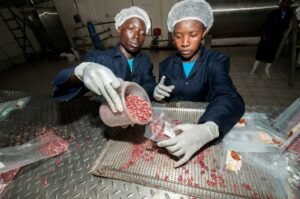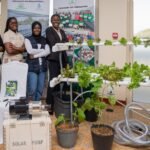By Marion Wagaki, Rootooba, 13 August 2020
Kenyan scientists are calling on heightened support for agrobiodiversity and agroecology to meet dietary needs.
This call comes as Kenya’s biodiversity is under threat from various environmental factors. Without a proper balance between development and ecosystems, the loss will adversely impact the nation’s growth and development in all sectors, experts say.
According to FAO, agroecology is an integrated approach that simultaneously applies ecological and social concepts and principles to the design and management of food. While agrobiodiversity is the result of the interaction between the environment, genetic resources and management systems and practices used by culturally diverse peoples. Therefore, land and water resources are used for production in different ways.
With local varieties and breeds of domesticated plants and animals disappearing, rapid declines mean that most local as well as international goals, such as the 2030 Agenda for Sustainable Development, will not be achieved based on current trajectories, as observed in the Kenya National Biosafety Strategy Action Plan (NBSAP)- (2019-2030).
Speaking at a virtual meeting that culminated into the launch of an Inter-Sectoral forum on Agro- biodiversity and Agro-ecology (ISFAA), Prof. Hamadi Boga, Principal Secretary in Kenya’s agricultural docket, observed that Biodiversity plays a critical role in providing food and feed among other requirements, for the wellbeing of humankind.
ISFAA is born out of an on-going project “Biodiversity and Ecosystem Services in Agrarian Landscapes-IKI Biodiversity project that was signed between the Ministry of Agriculture, Livestock, Fisheries and Cooperatives and GIZ in 2017 and was to run for four years but was delayed because of the election period.
Boga said that the rate of conversion of land into agriculture and settlement was high and in line with the high rate of population, resulting in soil erosion, destruction of natural habitats, chemical pollution and generally climate change.
“Kenya’s economy heavily relies on agriculture for its economic growth, which is intricately linked to a healthy environment, conservation and sustainable utilization of biodiversity,” he said.
The government has continually taken measures to ensure that agriculture can be one of the solutions of biodiversity degradation through various projects such as the National soil and water conservation programme, traditional high-value crops, conservation agriculture as well as the biodiversity for food and nutrition project.
“As Government we continue to work towards increasing food and nutrition security through the Big 4 Agenda, which is an integral part of our fight against the COVID-19 pandemic and hope this project will be one of our continuing endeavors to feed humanity while conserving nature,” Prof. Boga said.
His Counterpart from the Ministry of Environment and Forestry Dr. Chris Kiptoo said that agriculture could be an important enabler towards supporting biodiversity conservation.
“Agricultural production occupies at least one-third of the land in most countries and is a significant source of livelihood and employment in Kenya. If managed through practices that enhance rather than deplete natural ecosystems, it can protect biodiversity while enhancing sustainable use to support livelihoods, food and nutrition security, and resilience to climate change”, the PS said.
He explained that a Draft Post-2020 Global Biodiversity Framework that focuses on conserving and enhancing the sustainable use of biodiversity in agricultural and other managed ecosystems was published by the Convention on Biological Diversity (CBD) in January 2020 and shall be approved during the next COP Biodiversity in China which has been postponed to 2021.
Eng. Richard Kanui from ISFAA noted that an important output of the project “biodiversity and ecosystem services in agrarian landscapes” under ISFFA would be domiciled in the agriculture engineering services of the ministry of agriculture and would go a long way in giving incentive in the country.
The project he explained was tasked with identifying existing good practices and solutions in biodiversity and ecosystem service, integrating it into the agricultural landscape, building individual and institutional capacity, raising awareness of biodiversity and the ecosystem, and sharing good practices in national and international biodiversity forums.
Globally, since the 1900s, 75 percent of plant genetic diversity has been lost, as worldwide farmers lost their local varieties and landraces. Thirty percent of livestock breeds are also under threat of extinction, while 75 percent of the world’s food is generated from only 12 plants and five animal species, while only three species, rice, maize and wheat contribute to 60 percent of our plant food consumption.







